Heater Motor and Fan
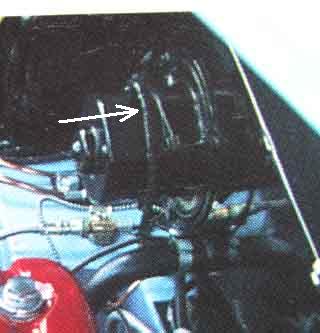
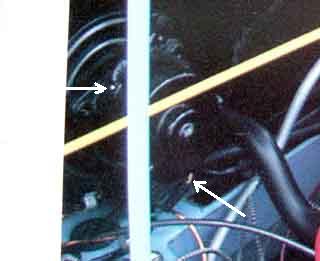
1964. Definitely two white wires entering the motor at one point, near the bottom:
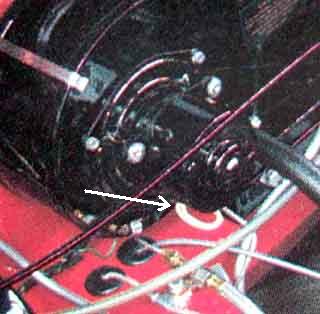
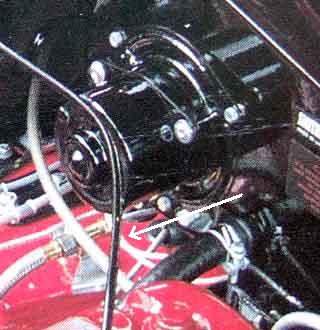
1968 MGC. This seems to have the early longer motor and the two white wires:
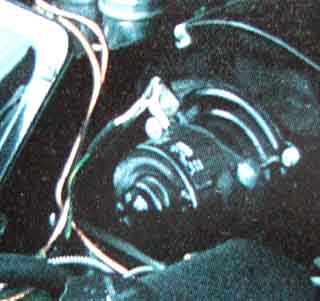
1969, still two white wires, although one has sleeve on it, possibly indicating polarity! This wire does seem to be going to the coloured harness wire, with the other one going to the black:
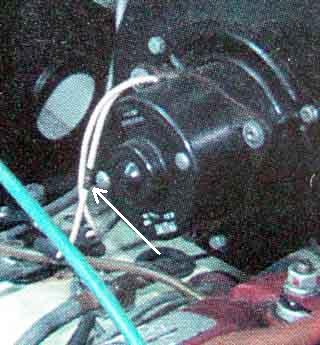
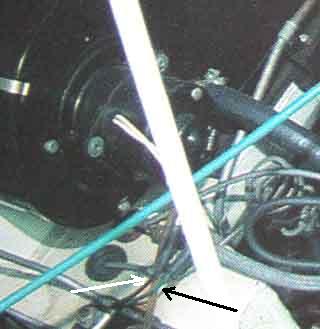
This 1969 MGC seems to have the later coloured wires and the shorter motor with the polarity indication, even though it is still three years before the introduction of the V8. Compare the depth of the motor bodies in the following pictures with those above. However this, and any of the photos, could be sporting a replacement heater unit or motor:
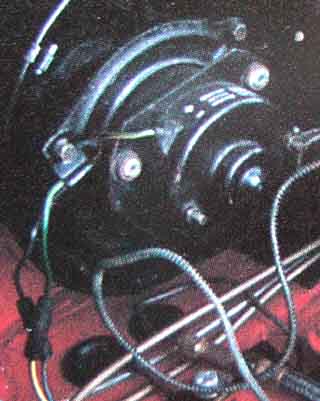
1972. One coloured and one black wire, entering the motor together, and polarity indication as above:
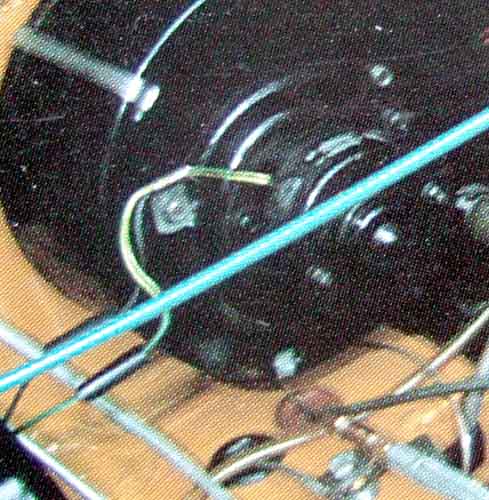
1975, definitely one coloured and one black wire going to opposite sides of the motor. A clear difference in the shape and size of the flange on the motor body compared to the earlier one:
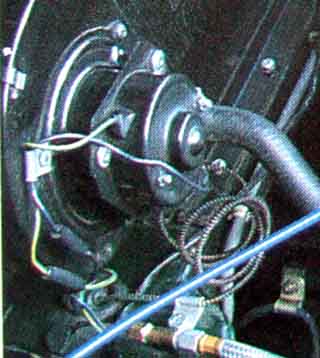
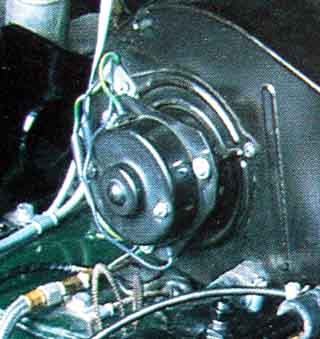
1980. Probably the same size motor (externally at any rate). Three wires coming from a 3-pin plug, two of them going into the heater casing plus the black earth wire going direct to the motor, and a third coloured wire coming out of the casing and going to the other side of the motor:
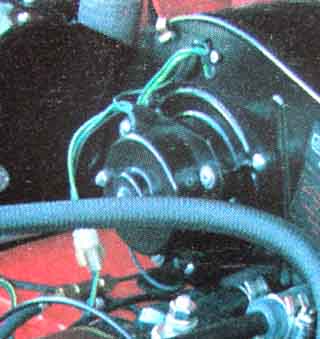

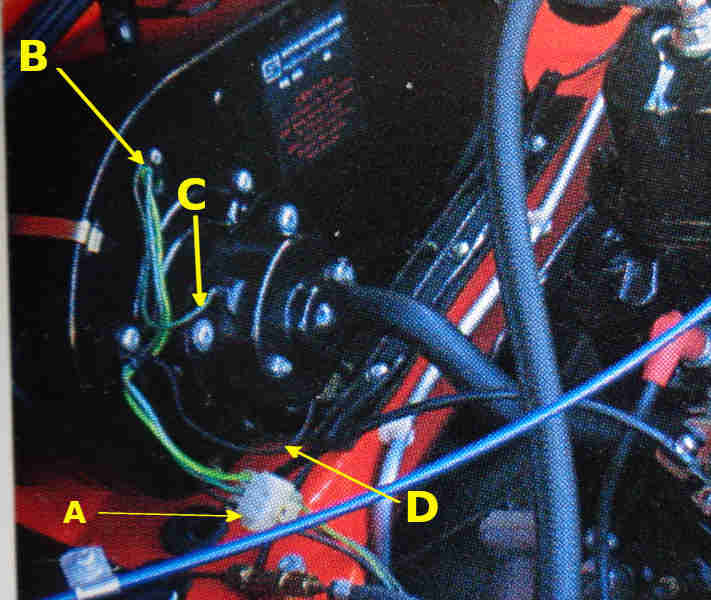
Dropper resistor for 77 and later 2-speed heater fan (circled) inside case: (Photo by Andy Charman)
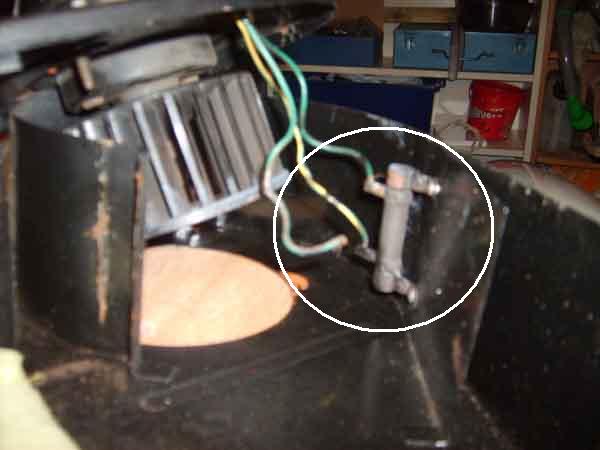
I didn't know the actual resistance and wattage values of the dropper resistor, but did some tests to see what sort of values they might be. I put a standard 3 ohm coil in series with the motor and it seemed to drop the speed by about half which would be about right. I then measured the voltage across it with the motor running at this speed and got about 5v, which at a system voltage of 12v (engine not running) is about half voltage which tends to confirm what I'd heard. This represents about 1.7 amps (voltage across the resistor divided by its resistance). Subsequently the manufacturer of the heater systems for the MGB and many other makes and models, Ashley Hinton, told me that they were 2.5 ohms so not a bad guess. Based on my test the motor has an equivalent 'resistance' of about 4 ohms, so with a 2.5 ohm resistor you would get about 2.2 amps, so about 5.5v across the resistor. Wattage is calculated by squaring the voltage and dividing by the resistance i.e. 5.5x5.5/2.53 which gives 12 watts. If you want to convert a single-speed system to a 2-speed the resistor would need to be greater than 12w to avoid burning it out, and probably screwed to a metal mass to aid cooling, making this type the best bet.
If you have a 2-speed you can measure the resistance by putting an ohmmeter between the green/yellow and green/brown wires with the fan switched off, and measure the voltage across the resistor by putting a voltmeter between those two wires with the ignition on and the fan switched to slow.
You can only calculate watts by measuring the actual resistance of and voltage across the resistor in this way as motor current varies with rotational speed, a stalled motor taking a lot more current than a freely running one. You can't measure the resistance of a stationary motor and use that in any calculations, except to see what the stalled current would be.
After-market: An after-market 3-wire (you can just make out the tinned end of the black wire just overlapping the grey wire, and a red wire), 2-speed motor and fan from MG Parts Benelux which may be the same as the 2-speed offered by MGOC. The correct rotation is shown on the label:
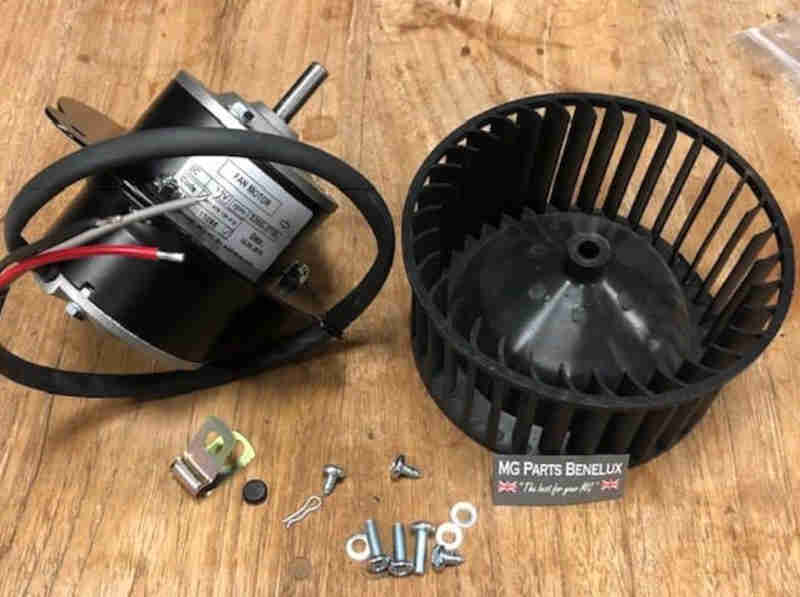
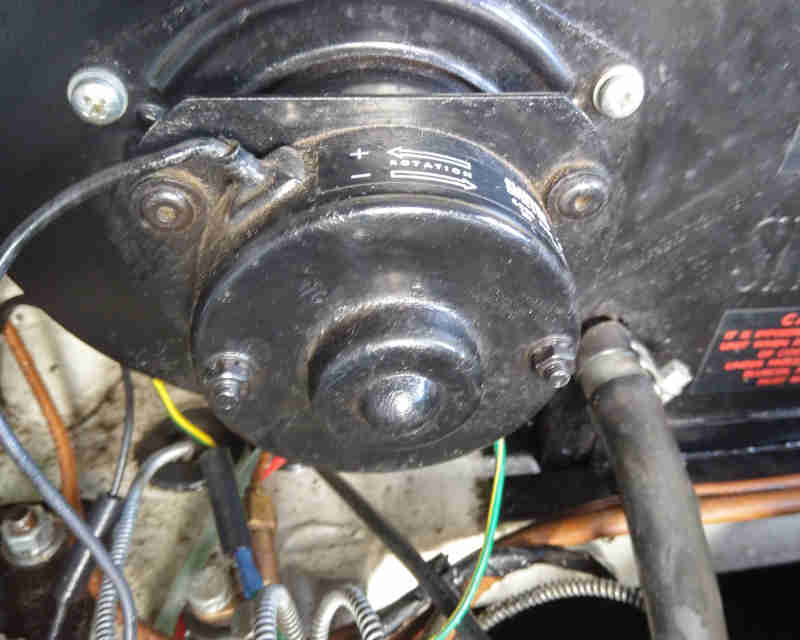
Ben Columb's replacement motor, the same direction label (although he fitted that himself), both wires coming out from the bottom and an alloy base to the motor. This replacement came with spade connections, so needed an adapter harness to connect to the bullets of the main harness:
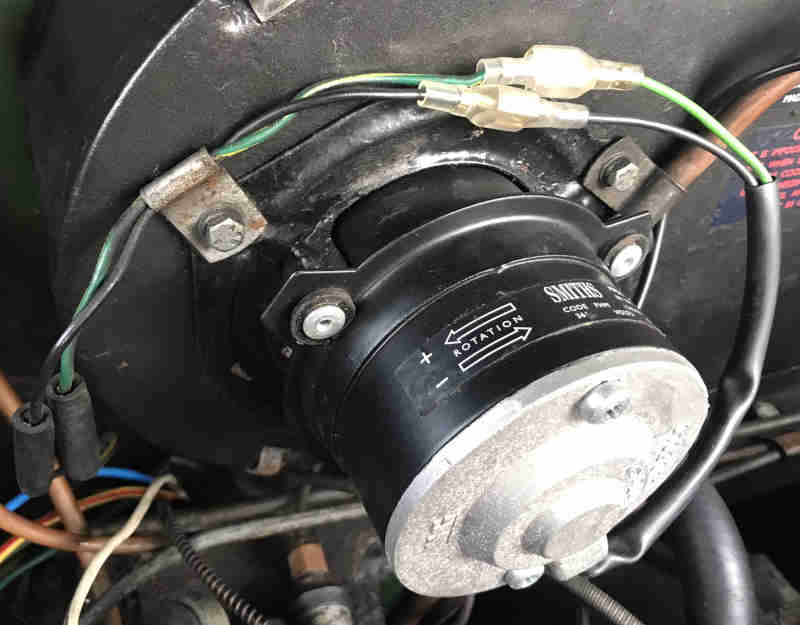
Clive said his now rotates 'clockwise', Ben said his rotates 'anti-clockwise', but what does that rotation mean? Looking at the case with the cover, motor and fan removed there is a guide plate directing air from the fan down onto the top of the matrix. Logically looking at the heater from the motor side that would indicate that the fan rotates clockwise to be the most effective, and checking Bee's that is indeed the case. But if you take the motor and fan out and look at the fan end on, it will be rotating anti-clockwise when most effective:
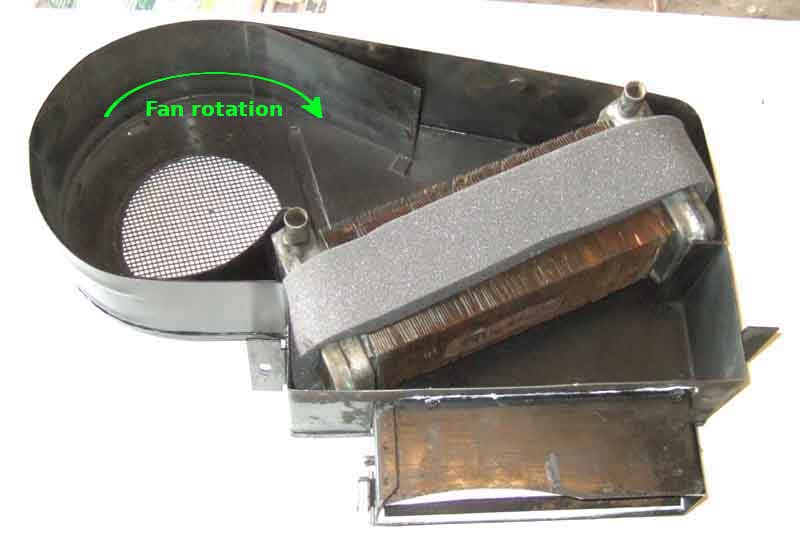
February 2022: Motors listed by Brown & Gammons (left, with spade connections) and Moss Europe (right, bare ends, wires truncated to reduce wasted space) are pictured below. It's not a very clear original but the B&G item has an arrow that would put the fan rotating with the top rotating away from the matrix when in the case (anti-clockwise), and Moss clearly has an arrow showing it would be rotating in the other direction (both circled in green). Both B&G and Moss only show one part number for both +ve and -ve earth cars, but to blow correctly in both it would have to be shunt-wound, i.e. non-polarity sensitive. In about 1970 the MGB motor changed to one with permanent magnets which reverses direction according to polarity, as indicated by the rotation labels above. However the B&G part number 37H7913 has an 'N' suffix which could be taken to be for negative earth, but there is no option listed for positive earth MGA and Mk1 MGBs. Moss again only has one for both +ve and -ve cars, with no suffix letter. Only Rimmer states this part number is for Mk2 cars i.e. negative earth cars, with the Mk1 positive earth version (17H2288) being NLA. None of the other suppliers I have looked at differentiate between +ve and -ve earth, some with a label showing anti-clockwise rotation, others showing clockwise. One other shows spade connections, the others (where visible) have bare ends. Where visible all have both wires exiting the motor body together, and sleeved:
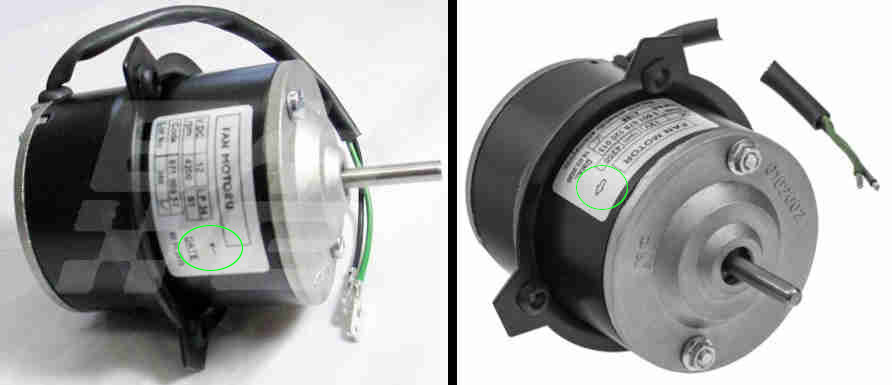
The effect of reverse connection (first clip) and correct connection (second clip) on heater fan performance:
And how about the fan? The blades are curved having a concave face and a convex face, they draw air from the centre and blow it outwards centrifugally, but which way would be most effective? Thinking about a spoon one wouldn't use its convex side to lift food from a bowl up to one's mouth, so does that mean air is moved best by the concave face? In which case the fan would be rotating anti-clockwise when looking straight at it as here, or clockwise when looking at the back of the motor when it is in the case:
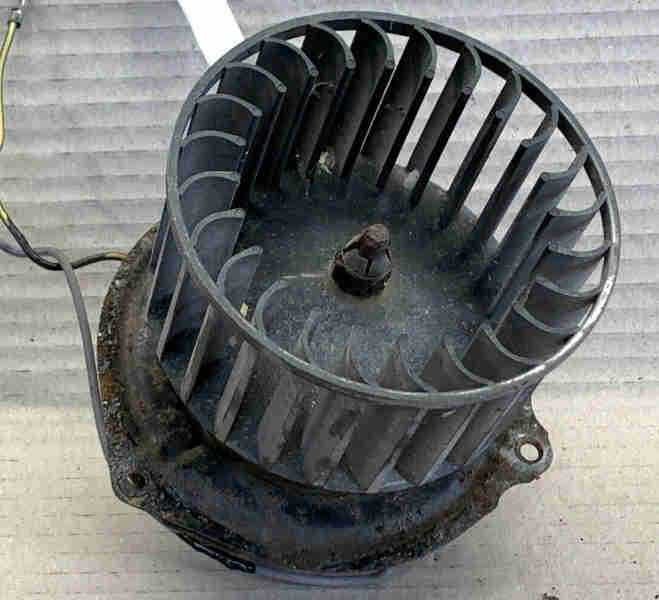
Mine rotates clockwise, and Ben Colomb shows (with a very noisy motor ...) that even out of the casing rotating clockwise shifts more air than anti-clockwise.
